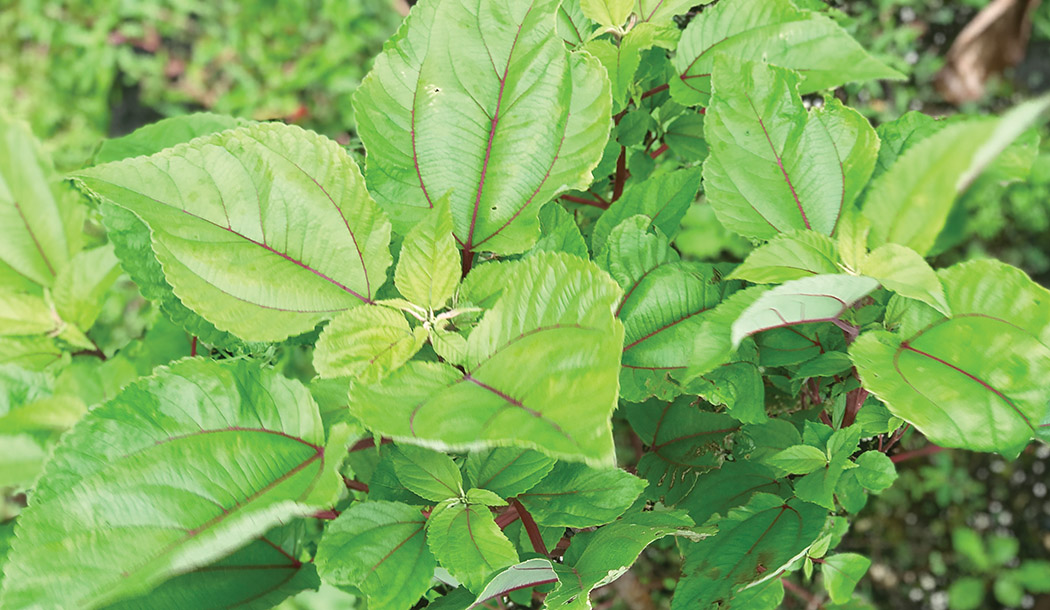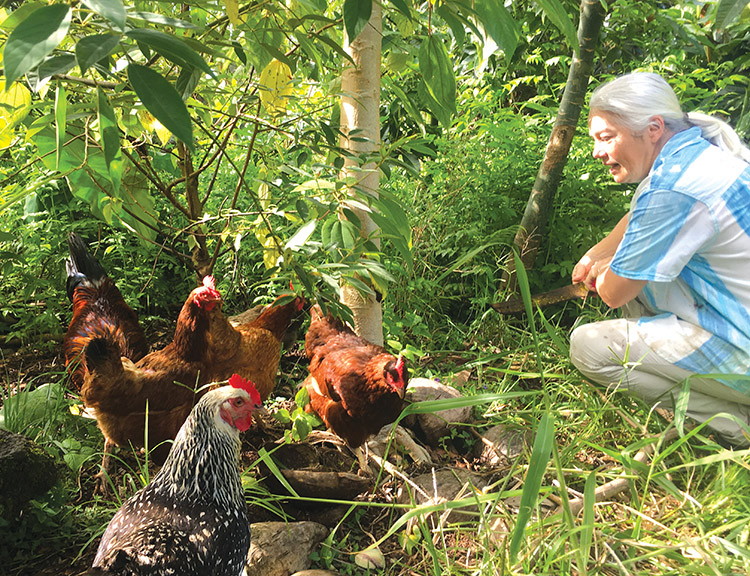
Mālama Mokupuni–Caring for Our Island Environment: A Walk through a Home Food Forest
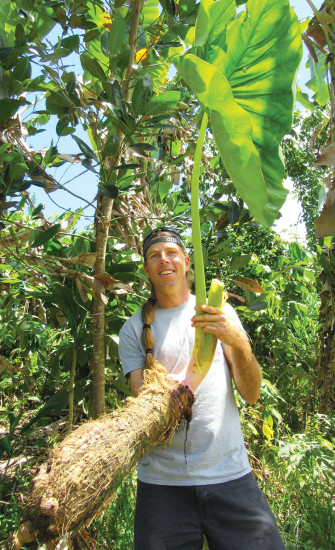
By Rachel Laderman
Stepping onto the narrow path of a food forest, the first thing you notice is the cool, quiet peacefulness. In the dappled shade, you see a variety of leaf forms, textures, and colors—dancing oval katuk (sweet leaf shrub) leaflets; crinkly, dark green leaves of edible hibiscus; splashes of red from the new growth of cassava. Looking up, a large jackfruit hangs a bit perilously over the path. Birds are singing and quickly flit through the forest, seeking bugs, berries, and ripening bananas.
I am walking through a food forest with its designer, Dave Sansone, of Agroforestry Design, who also serves as an agriculture production specialist with The Kohala Center. Dave is strongly influenced by traditional indigenous agriculture systems, the basis for permaculture.
“I became disillusioned with organic production agriculture because it is rarely sustainable, since it often depends on outside inputs and high amounts of labor,” Dave explains of his route to agroforestry.
Agroforestry, or planting multiple food crops in a forest-like setting, is “a new word for ancient practices,” says Dave. South Pacific Islanders have farmed such polycultures for thousands of years. “Agroforestry was part of traditional Hawaiian food systems and is being revitalized through groups like Pōhāhā I Ka Lani and Hawaiian researchers. The Hawaiian agriculture and aquaculture system, which includes agroforestry, is one of the best food systems in the world, highly productive while protecting the fragile environment.”
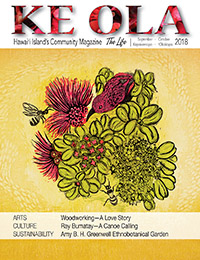
Dave’s approach to agroforestry differs from the western-style practice of typically focusing on windbreaks for cash crops and integrating tree crops with animals. Instead, he builds forests based on diversity and succession. “Successional agroforestry is the practice of planting the way nature gardens—an intentional mix of short, mid, and long term plants including annuals, perennials, groundcovers, green manures, crops, shrubs, and trees grow like a natural forest to beat the weeds and fertilize naturally.”
As we walk, Dave points out how the food forest provides not just food security but many of the key ecological services of native forests: fertility, wind and water quality protection, carbon sequestration, and erosion control. The forest protects water quality by slowing rainwater down as it moves through leaves and soil before finally reaching streams.
Eight years ago this Hāmākua forest was a waiwi (strawberry guava) patch overgrown on old sugarcane land. Machinery that removed the trees compacted the soil. Dave started off by using “bio-tilling,” a natural way to loosen soil by planting crops such as daikon radish and pigeon pea whose roots break up the compacted ground and allow the soil to breathe.
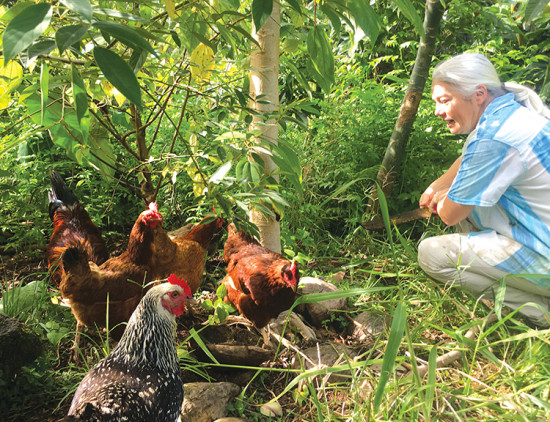
“As Masanobu Fukuoka says, ‘mimic nature,’” Dave adds with a grin, citing a pioneer in Japanese natural farming.
After a disturbance, such as bio-tilling, nature acts to fill in exposed soil with fast-growing, tough, pioneer species: plants that do well in fluctuating conditions and create habitat for other plants. They quickly form a ground cover and leafy biomass that snuffs out invasive plants while producing mulch, shade, and rich soil while the long-term trees grow up through them. Pioneer plants such as cow peas, Gliricidia (a medium-size legume tree), pigeon pea, and koa also often fix nitrogen.
As we weave through the lush forest, these pioneer plants have been mostly cut back. Enough sun reaches the forest floor to encourage fruiting pineapples among creeping Okinawan and sissoo spinaches. We push aside stems of Warabi ferns, mulberries, and cassava competing for space in the middle-forest layer. Cacao, māmaki, and tea thrive in the shade. The trunks of banana, ulu, jackfruit, Malabar chestnut, and avocado are entwined with bean, chayote, and yam vines.
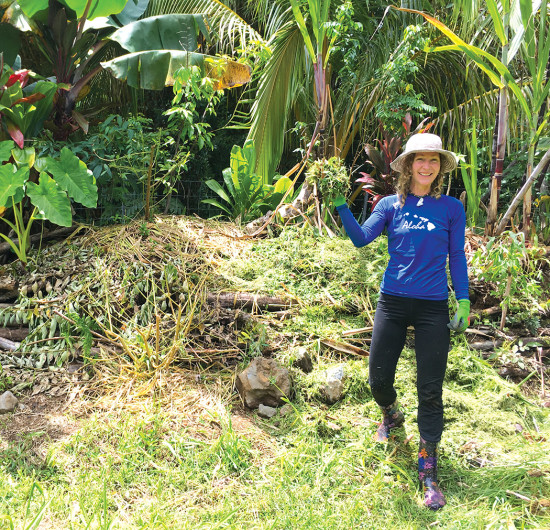
With proper design, a mature food forest is a time-honored, low-maintenance way to provide highly nutritious food and medicine, while also nurturing the environment. If you have a swath of lawn to mow, think about working with natural succession to create a food forest instead. There are many local resources to help you take the proper steps. The birds above, soil below, and water downstream will thank you. ❖
Reference: Rachel Laderman, Lynker Technologies Marine Science Division/NOAA Affiliate, Hawai‘i Island
For more information:
AgroforestryDesign.net (Dave Sansone)
Agroforestry.org (nonprofit providing free publications), Kauaifoodforest.org/

